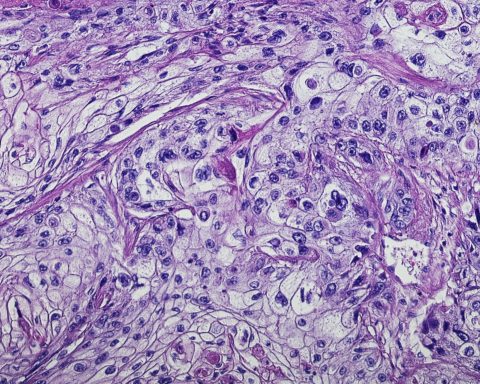 Matt Sawyer helps clinicians to understand their carbon emissions footprint from running their practice, and helps produce a practice-wide ‘green plan’ or roadmap to work towards net-zero emissions.
Matt Sawyer helps clinicians to understand their carbon emissions footprint from running their practice, and helps produce a practice-wide ‘green plan’ or roadmap to work towards net-zero emissions.
‘The climate crisis is a health crisis’ is an increasingly well-used phrase. It is widely recognised that providing health care can impact planetary health and a damaged natural world can have lasting health implications.
My journey to help develop a tool to aid GPs measure their contribution to the climate crisis has been shaped by working as a GP in the North East of England for over 15 years. However, I have been interested in the health of the planet for far longer. Eight years ago I stepped down from being a GP partner, transitioned to locum work, and returned to education where I completed a BSc in Environmental Science followed by an MSc in Corporate Sustainability and Environmental Management.
In October 2020, the NHS became the world’s first health system to commit to delivering a net-zero service by 2045. Interestingly, since this announcement, attention has been focused on hospitals and secondary care, and far less on primary care. This was surprising to me as primary care is responsible for approximately 23% of the total NHS emissions footprint — about 5.75 million tonnes per year, amounting to 1% of UK greenhouse gas emissions.1
In October 2020, the NHS became the world’s first health system to commit to delivering a net-zero service by 2045.
We all have a role to play in tackling this emergency. To respond to this, GP surgeries are anticipated to start measuring and reducing emissions, but until now there has been little support available to enable them to achieve this. The need for practical solutions that would help GP practices to lessen the impact on the environment was apparent. To progress towards the net-zero ambitions, I was aware that GPs needed a better understanding of their carbon footprint and what they could do to reduce it, without adding a huge burden to their workloads.
My experience, combined with my knowledge of environmental sustainability, enabled me to recognise not only how to calculate the emissions but also convert the number into something meaningful for practices to use. This led to the creation of the GP Carbon Calculator.
Developed in association with the Sustainable Healthcare Coalition and Boehringer Ingelheim, the GP Carbon Calculator is a free, easy-to-use resource for every UK GP practice to access. The resource supports them in their efforts to reduce emissions and tackle climate change to help protect the health of the planet and ultimately their patients.
… the GP Carbon Calculator is a free, easy-to-use resource for every UK GP practice to access.
The online tool helps GP practices quantify the non-clinical greenhouse gas emissions used to run the practice. This includes the hotspots and total emissions from energy use, staff and patient travel, and goods procured from the business. Tackling emissions often has multiple co-benefits — whether financially by using and wasting less energy, improved health for staff and patients from active travel, or through the reduction of wasted resources by improving our purchasing of goods.
The GP Carbon Calculator has been piloted by a dozen practices, allowing both practice managers and GPs to provide invaluable feedback. Those practices who have trialled the resource were extremely supportive, expressing their gratitude that such a tool has been developed to help measure their carbon footprints. One GP said that they have been stuck trying to work out their practice’s carbon footprint for the past 2 years and had just about given up. They said that the GP Carbon Calculator was a vital tool and they wanted to encourage all practices to use it.
By utilising the GP Carbon Calculator, practices will not only be able to identify and understand how to reduce their carbon intake in-line with the NHS’ net-zero ambitions, but they will also be able to reduce their maintenance costs through improved efficiency. Ultimately, by reducing their carbon impact, GP surgeries will be helping to reduce respiratory and cardiovascular health implications caused by air pollution to protect the health of both the current and future generation.
The GP Carbon Calculator is accessible at https://www.gpcarbon.org, to support GP practices in reducing the environmental impact of primary care while improving outcomes for patients and staff.
Reference
1. Tennison I, Roschnik S, Ashby B, et al. Health care’s response to climate change: a carbon footprint assessment of the NHS in England. Lancet Planet Health 2021; 5(2): e84–e92.
This article was developed in association with the Sustainable Healthcare Coalition and Boehringer Ingelheim.
Featured photo by Matthias Heyde on Unsplash.







Nada Khan is an Exeter-based NIHR Academic Clinical Fellow in general practice and GPST4/registrar, and an Associate Editor at the BJGP. She is on Twitter: @nadafkhan
Our house is on fire. I am here to say, our house is on fire.
Greta Thunberg, World Economic Forum 2019
Our house is still on fire. Your inaction is fuelling the flames by the hour.
Greta Thunberg, World Economic Forum 2020
It’s our ‘final warning’; the world is failing to limit the impacts of climate change. The third report from the Intergovernmental Panel on Climate Change (IPCC) paints a bleak picture on the state of the climate emergency; it’s a now or never situation. The IPCC states that it is ‘likely’ that global heating will increase above 1.5° Celsius compared to pre-industrial levels; and this is the point at which the effects of climate changes become irreversible.1 However, there is some cause for hope. The same report suggests that both drastic efforts to reduce greenhouse gas emission and technology advances to remove carbon dioxide from the atmosphere could make any temperatures increases temporary. What can we do in primary care?
I’m not going to try and reinvent the wheel here; BJGP Life and the BJGP include articles from GPs and primary care academics who have written extensively about the climate emergency and how primary care can act to maximize sustainability. But if you, like me, are reading the IPCC report and feeling increasingly worried about the climate emergency and what we can do to make sustainable changes within a time sensitive crisis, I’ve tried to bring together recent articles on this topic for guidance. Unless anyone has any bright ideas on how GPs can start capturing carbon dioxide, the focus for primary care must be on reducing greenhouse gas emissions. Terry Kemple, the RCGP Representative for Sustainability, Climate and Green Issues, wrote alongside colleagues in the BJGP about the climate emergency and tried to provide practical answers to the question of ‘what should we do?’.2 In their article, the team reference the RCGPs Green Impact for Health toolkit, which lists over 100 actions that practices can take to make changes to their carbon footprint and save money.3 Kemple et al acknowledge that there are barriers to implementing change, such as the extra work of setting out a green policy, being a lone enthusiast in a practice but finding it difficult to achieve goals, and dealing with the realities of actually achieving a lower carbon footprint. The actions to overcome these barriers need time and resource, but the ‘first imperative is for everyone who cares to turn up and start’ doing something.
Identifying waste and reducing carbon emissions is a complex task, but there are tools to help practices navigate this area. Matt Sawyer, a Yorkshire GP who runs a sustainability consultancy, has developed a ‘Carbon Calculator’ to help GPs and practice to measure their carbon footprint and what they can do to reduce it.4 The GP Carbon Calculator is available at https://www.gpcarbon.org/#/. Part of acknowledging what is happening is talking about it. At a patient level, Margaret Jackson and Lesley Morrison, who were observers at COP26, encourage us to talk about the climate emergency openly with patients, for example, when discussing inhaler prescribing.5 What are the potential impacts, however, on discussing climate change in the context of healthcare usage upon the therapeutic relationship? Not everyone is ready to talk about the climate emergency, and whilst some patients might be motivated to make changes to help the environment, other patients may sense a conflict of interest (for example, wondering if their GP worries more about the environment than about them) or feel guilty about their healthcare and medication use.6 So tread forward with these discussion, but perhaps tread carefully with patients you understand well.
The IPCC report implores us to act now. And if you’re looking to act, you’re not alone. The Greener Practice network (https://www.greenerpractice.co.uk/) supports connections between clinicians to share information and guidance through local groups, as well supporting a range of WhatsApp groups for discussions on different themes such as education, greener clinical care and organisation level changes. And because this is an evolving topic, BJGP Life has a regular column called Planetary Primary Care which aims to ‘bring essential updates for general practice around the climate emergency and sustainable healthcare’; keep an eye out for new posts. An impending climate crisis needs us to be well informed, well connected and ready for action. Our house is on fire, and the flames are getting closer to burning it all down.
References
Change IPoC. Climate Change 2022: Mitigation of Climate Change, 2022. https://www.ipcc.ch/report/ar6/wg3/downloads/report/IPCC_AR6_WGIII_FullReport.pdf
Kemple TSJNS, G.; Wilson, A.; Wynter Bee, J. Primary care and the climate and ecological emergency. British Journal of General Practice 2021;71(711)
Green Impact for Health 2022
Sawyer M. GP Carbon Calculator: making it easier to support the NHS’ net zero ambitions 2022 [Available from: https://bjgplife.com/gp-carbon-calculator-making-it-easier-to-support-the-nhs-net-zero-ambitions/.
Jackson MM, L. GPs must talk about climate breakdown: BJGP Life; 2022 [Available from: https://bjgplife.com/gps-must-talk-about-climate-breakdown/.
Harvey GT, M., Cussans, A.; Twohig, H.; Wilson, A. Talking to patients about the climate emergency: The BMJ Opinion, 2021.
Featured image by Markus Spiske on Unsplash
[…] GP Carbon Calculator: making it easier to support the NHS’ net zero ambitions […]